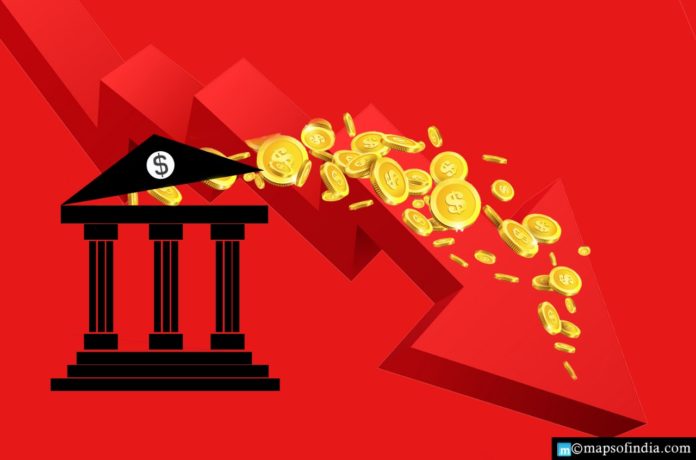On Thursday, 16 September 2021, Finance Minister Nirmala Sitharaman took considerable measures towards the financial situation of the banking sector in India while listing the aspects of the bad bank.
A ‘bad bank’ is a bank that buys the bad bites and other illiquid holdings of other moneylenders and monetary institutions to help clear their balance sheets – their assets.
Finance Minister Nirmala Sitharaman had first talked about establishing a ‘bad bank’ in her 2021-22 Union Budget. According to her, the government would mortgage Rs 30,600 crore on the security receipts (SRs) issued by the National Asset Reconstruction Company Ltd (NARCL) to buy distressed loans from banks to help remove the investment sector’s stressed assets of Rs 2 lakh crore. It will acquire bad mortgages from banks while proposing 15% of the net asset value in cash, and the remaining 85% would be government-wagered security receipts.
NARCL has eight public sector banks as its stockholders. The company currently has four executives on its board -Sunil Mehta, Padmakumar Madhavan Nair, Salee Sukumaran Nair, Ajit Krishnan Nair. In addition, there would be 16 bondholders for NARCL, including PSBs, private sector banks, and NBFCs.
It will be active for five years and can be summoned only in case of resolution or liquidation of the assets, and the SRs will be tradable.
During the first phase of the bad bank, Rs 90,000 crore of stressed assets will get conveyed to NARCL, against which banks have made 100 per cent provisions.
According to the finance minister, most of the big-ticket NPAs (Non-Performing Assets) will get conveyed to NARCL, hence cleaning up banks’ balance sheets.
Here is her official statement as per news reports:
“One of the reasons for the NPAs is because banks personnel do not have adequate specialization in NPA disposal. Bank professionals, however good they are, cannot deal with asset rexonstruction. So the banks will now feel that it is no longer their headache and free to do their core- competent jobs.”
The government has specified that the NARCL will pay its assured fee of 0.25% (of the outstanding guarantees) from the second year of setting up.
The fee will progressively increase to 0.5% in the third year, 1%in the fourth year, and 2% in the fifth year. As a result, the Reserve Bank of India (RBI) has notified in its Financial Stability Report that the Gross NPA ratio of banks may surge from 7.48% in March 2021 to 9.8% by March 2022, under a baseline synopsis.
She added, “Cabinet paves the way for the operationalization of the National Asset Reconstruction Company or the bad bank”.
Anish Mashruwala, the partner, J Sagar Associates, stated:
“This is a positive move for the banking sector and the Government has ensured that the majority of the PSUs are capable of standing on their own feet before announcing this. The success of the bad bank, however, will depend on the implementation and management of the transferred NPAs. The Government will likely keep a close eye on the management of the India Debt Resolution Company that will be tasked with the same.”





